Buck, Lynn, et al. v. City of Albuquerque, et al., CIV 04-1000 WJ/DJS (USDC)
CASES TYPE: Civil Rights
CASES TYPE: Jury verdict in favor of our client.
On a rainy day on March 20, 2003, people gathered in front of UNM’s Bookstore at 5:00 pm to protest President George W. Bush who ordered the Invasion of Iraq on March 19, 2003. At approximately 4:00 pm, all APD Metro Division officers attended a briefing concerning the protest. At 4:45 pm, officers began arriving to the scene of the protest. It became immediately clear this anti-war protest grew much larger than any previous. At 5:00 pm, the protestors consisted of several hundred people ranging from children to senior citizens.
Protestors were loud, animated and passionate. Chants of “Peace; not War!” and “Who’s Street? Our Street!” echoed throughout the university area. A few protestors began to leak from university property, to Central Avenue and illegally blocked traffic. Police officers gave several public address instructions to return to the sidewalk. However, the warning did not faze the protestors. For the safety of motorists and protestors, police ordered Central Avenue to be closed so a “safety zone” could be formed between vehicles and protestors. Traffic was allowed to leave, but not enter the protest area.
When compared to previous anti-war protests, the collective conduct of protestors was angry. Historically, organizations and leadership maintains a certain level of understanding between police and protestors. However, no official organizers could be identified by police. Several protestors seemed to stir up and ignite the crowd and were encouraged to disobey police orders. In an attempt to help better control the situation, an APD Captain ordered the APD SWAT to set up a line at Central Avenue and University to confine the protestors to the UNM area. Some police officers heard protestors intended to march onto I-25 creating an obvious danger to everyone involved.
Slowly, officers were successful in preventing protestors to reach the freeway. They slowly corralled the protestors west near Cornell and Central. By this time, there were still around 700 protestors, Agitators in the group indirectly and directly provoked officers. Five gallon jugs were used by some as drums that set the tempo and collectively raised the crowd’s collective anger. Moreover, these homemade drums drowned out the PA orders from police. Officers gave repeat warning to move to the sidewalk and clear the streets or chemical agents would be used. At approximately 7:00 pm, a police Captain gave orders to disburse rubber CD Gas balls into the front of the crowd.
At this time, an APD captain ordered the arrest of those protestors who were drumming. As the drumming diminished, a Captain once again gave PA commands, stating that the police would use tear gas to clear the crowd from the street. Two more rubber CS balls were deployed, but this time on the far east side of the crowd so that the smoke would cover more of the crowd.
After additional verbal commands, the officers were now able to move the protestors back onto UNM property, with a great majority of people dispersing to the north. The protesters finally moved onto UNM property after approximately 30 minutes. By 8:30 p.m., the protestor’s numbers had dwindled and traffic on Central was reopened.
Lynn Buck and other plaintiffs complained the use of tear gas, pepper spray and other kinds of treatment was excessive. The jury was asked if the incident commander overseeing the protest, or the five other line officers had violated the plaintiffs’ right to freedom of expression and assembly, or had used excessive force.
The defendants made the argument they had probable cause to arrest Buck and other protestors because lack of a marching permit. Plaintiffs on the other hand, argued police officers closed roads off before protestors were even there, essentially directing the procession. Plaintiffs argued police permitted and sanctioned the protest to flow into the streets. This would have lead protestors to be given a de facto parade permit and wave their lack of permit. Consequently, it would have meant officers did not have probable cause to arrest anyone at the protest.
As to First Amendment Rights being violated claim, the plaintiffs alleged the police violated their right to free speech and prevented their peaceful assembly. The defendants argued their actions were not driven to silence protestors and their opinions, but rather to uphold their duty and responsibility to enforce the law.
The jury returned a verdict in favor of all Defendants finding that none of the Defendants violated any of the Plaintiffs’ constitutional rights or committed a battery against the Plaintiffs. It was subsequently ordered that the Plaintiffs’ state law claim of battery be dismissed with prejudice against all Defendants, and the Plaintiffs’ constitutional claims brought under § 1983 for Excessive Force and the First Amendment be dismissed with prejudice as to all Defendants. Judgment was entered on merits in favor of all the named Defendants and against all of the named Plaintiffs.
